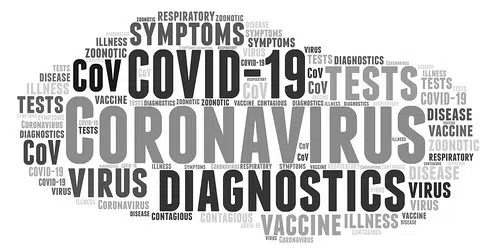
 Effingham, IL -(Effingham Radio)- Some believe the Coronavirus Pandemic is the worst public health crisis in the state’s history.
Effingham, IL -(Effingham Radio)- Some believe the Coronavirus Pandemic is the worst public health crisis in the state’s history.
The statewide toll as of Thursday from COVID-19 with 139,434 infected and 6,810 killed during the pandemic is a public health tragedy of epic proportions. For now, it falls far short of another pandemic’s impact in Illinois more than a century ago.
Spanish Flu killed 23,500 Illinois residents from 1918-19. Though it first spread to Chicago in September 1918 from the Great Lakes Naval Training Station north of the city, the disease, today called the Great Influenza, would spread widely throughout the state. More than 8,000 deaths occurred in Chicago, about one third of the total fatalities statewide. The Influenza spread to major cities and tiny farming communities for more than a year in Illinois and across the nation.
The number of Great Influenza cases is staggering. Medical experts believe more than 500 million people were infected worldwide, or about one third of the world population at that time. More than 50 million died across the globe – some historians and researchers now believe the total amount of deaths was much higher. In the United States, the Great Influenza killed 675,000, more deaths than during the American Civil War. That total also surpasses the number of Americans killed in all wars this country fought during the Twentieth century.
Movement of troops during the last year of World War I helped carry the deadly virus across the oceans and continents. Wartime censorship of news that might hurt national morale left millions uninformed of the health threat. Part of the reason that the disease’s name was tied to Spain was first accounts of the influenza came through uncensored news articles from Spain.
One theory now considered is the Great Influenza started in Kansas. Dozens of soldiers at Fort Riley in Kansas were ill during the first months of 1918 and the virus would later spread to other military bases before being carried overseas in troop transports to Europe, where it spread through the trenches. The first strain of the virus in early 1918 was relatively mild, but the second strain turned very lethal.
First reaction to Influenza cases in Illinois during the fall of 1918 was summed up by an Illinois health official: “Don’t worry!” He was as wrong as the doubters months ago claiming little risk from COVID-19.
As more became sick or died in 1918, there were efforts at social distancing with business closures and cancellations of public events in many communities. Churches held outdoor services to avoid contagions. There were closures of dance halls and theaters, whether featuring films or live performances. Unfortunately, war bond rallies and other patriotic gatherings, deemed essential for achieving victory in Europe, were super spreaders of the disease that fall. Hospitals were overwhelmed with influenza patients and many medical providers became sick or died.
People across the country wore face masks, called “germ screens,” to protect against spreading or catching the deadly flu. Masks made from gauze proved ineffective for protection from the virus. Sturdier cloth and plastic masks today provide better protection.
Medical science could not offer much relief from the virus a century ago. Scientists did not even have the capability to see the virus cells due to the magnification limits of microscopes during that period. No vaccine could be developed and healing through antibiotic drugs was years away. So most medical treatments worked against the flu’s symptoms through laxatives, herbs, sponging patients with fevers and providing fresh air to the afflicted. There were also bogus treatments for sale to desperate consumers.
Fortunately, medical treatments and research are much more advanced today, helping to reduce the number of deaths from this pandemic. But this latest pandemic still mystifies doctors and scientists in many ways, especially the high number of people testing positive for COVID-19 but not showing any symptoms. Developing an effective vaccine could be months away or longer.
All this is a reminder that medical science, just like a century ago, still faces many challenges when battling new diseases.
(This article was written by Herb Meeker, Public Information Officer for the Effingham County Board, with information from a number of published sources on the Great Influenza)








Comments